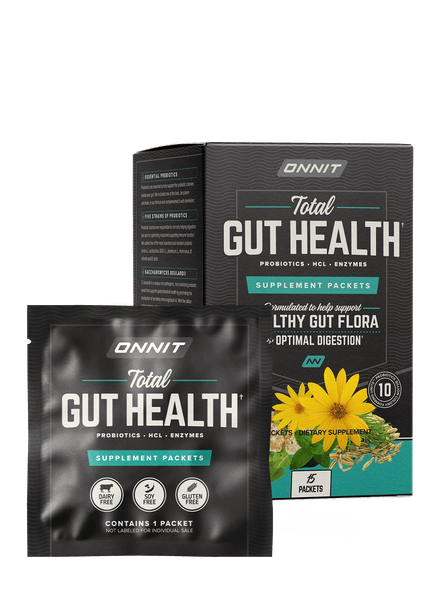Everybody’s going vegan. (Again.) With the release of the Netflix documentary What The Health in March, there’s been a resurgence of interest in plant-based nutrition and fear mongering over meat, eggs, fish, and dairy.
The movie, directed by Kip Andersen and Keegan Kuhn—who have shot similar alarmist films such as Cowspiracy and Turlock—alleges that eating eggs is as bad as smoking cigarettes, consuming animal products raises the risk of diabetes (while sugar is innocent), and meat causes cancer. They charge the factory farming of animals with polluting the environment, and going veggie, they say, is the only real solution for both human diseases and the ills of the planet.
As you’d expect, the film has aroused multiple angry responses on the Web from meat-eaters and scientists alike. But it’s also won probably just as many new converts to the vegan lifestyle.
In August, R&B star Ne-Yo, a lifelong meat-eater, announced on Facebook that he “ain’t messing with meat no more” after having seen the film. He even bid a special goodbye to dairy: “I just want to say to all the cheese of the world, I am so desperately going to miss you,” he said. “You were a good, good friend of mine, but you’re trying to kill me.”
While the world waits anxiously to see if Ne-Yo and cheese will reconcile, we thought we should dig into the documentary that’s attempting to slaughter so many sacred nutrition cows (while trying to save some real ones).
For the record, we fully agree that the mass production of animal products is generally unethical. Whenever possible, both for health and humane reasons, we recommend sourcing minimally processed meat and dairy from providers that carry high animal-welfare standards. There are also legitimate environmental concerns (however, there are potential solutions that can mitigate the damage). If someone wants to go vegan out of love for animals or the planet—or for any other salient purpose—we understand completely. But many of the warnings doled out in this movie are flat out wrong, and further muddy the waters for people seeking clear advice on what to eat to be healthy.
We’ll break down some of the movie’s most irresponsible claims for you, one by one.
Eggs and Heart Disease
They say: Eating one egg is the equivalent of smoking five cigarettes in its effect on your life expectancy.
Onnit says: This outrageous comparison is supposedly based on two studies. The first was a 2010 trial in the American Journal of Epidemiology that examined the effect of lifestyle and dietary factors on mortality in middle aged women. Those who ate cholesterol-containing foods were found to be at a very minor increased risk for developing cardiovascular disease. At the same time, those who smoked were, unsurprisingly, at almost double the risk.
How did the “experts” in What The Health look at these results and arrive at the idea that one egg is as damaging as five cigarettes? We have no idea. They examined the amount of cholesterol in an egg yolk and determined that the effect on the arteries would be the same as smoking a quarter-pack, but the researchers in the study itself never made this connection. And looking at how cholesterol and cigarette smoke affect the body, it’s clear that the comparison is insane.
Smoking inflames the arteries, immediately prompting the body to lay down plaque in response. This is an undeniable cause of heart disease. As for eggs? It isn’t even clear if dietary cholesterol impacts the cardiovascular system at all! The second study cited was so flawed it prompted scientists from four different universities to come together and write a letter to the journal editor entitled “Putting Eggs and Cigarettes in the Same Basket; Are You Yolking?” The criticism points out that, as people age, plaque accumulates in their arteries regardless of what they’re eating. The average age of the study group that ate the most eggs was 70, so while they were at the most risk for cardiovascular disease, it’s not clear whether it was due to their egg yolk consumption or their advanced age. This is called a “confounding variable,” since it makes the findings confusing.
But for the last word on smoking and cholesterol, we turn to a 2009 study in Risk Analysis that examined five changeable risk factors for cardiovascular disease: smoking, egg yolk consumption, exercise, BMI, and diet. Smoking, of course, accounted for the highest increased risk at 71.6% for women and 59.6% for men. And eating one egg per day? A barely-there 0.247% risk for women and just under one percent for men.
Not only are eggs not in the same ballpark (or galaxy) as smoking, they’ve been shown to be harmless many times over. The International Journal of Cardiology found that eating two eggs daily for six weeks had no effect on total and LDL cholesterol. In 2013, a meta-analysis in the British Medical Journal determined no significant association between egg consumption and risk of cardiovascular disease and stroke.
And then there’s this: eggs may actually help lower your risk for heart disease, according to a Japanese study published in the International Journal of Epidemiology. It surveyed 40,000 people over 16 years, showing that eggs decreased the risk of death by stroke. Incidentally, so did other foods the researchers tested, such as fish and dairy. Meanwhile, beef, pork, chicken, ham, sausage, and milk had NO association with stroke death. What the f***, What The Health?
Meat, Carbs, and Diabetes
They say: Diabetes is “never” caused by eating carbs. In fact, overeating carbs “cannot” make you fat. The sugar in baked goods like cookies “lures you in,” but it’s the fat in these foods that does the damage. It’s a meat-based diet that creates insulin resistance.
Onnit says: Did we all just enter the upside down world from Stranger Things? This is lunacy. Eating sugar can make you fatter, and overeating sugar is strongly associated with diabetes.
A Journal of the American Medical Association study of 91,249 women concluded that higher consumption of sugar-sweetened beverages is associated with a greater magnitude of weight gain and an increased risk for developing type-2 diabetes, “possibly by providing excessive calories and large amounts of rapidly absorbable sugars.” The researchers adjusted for other factors that would contribute to weight gain, including waist-to-hip ratio and hip circumference, which means that women who were already at a high risk were pushed even farther into the danger zone when they consumed sugary drinks. The scientists also adjusted for intake of caffeine, red meat, processed meat, French fries, sweets, “snacks,” vegetables, and fruits. Furthermore, “associations did not differ substantially by obesity status, family history of diabetes, physical activity level, cereal fiber intake, trans-fat intake, or ratio of polyunsaturated to saturated fat.”
Said another way: sugar is bad. Really bad.
In 2015, the British Medical Journal found that habitual consumption of sugary drinks—including fruit juice—was associated with a greater incidence of type-2 diabetes, independent of how much body fat the subjects had. Therefore, the researchers decided that juice is “unlikely to be” a better alternative to other sweetened beverages for preventing diabetes. “Consumption of sugar-sweetened beverages over years may be related to a substantial number of cases of new onset diabetes.”
When it comes to the What The Health assertion that fat alone has the hidden super-power to make sugary foods such as baked goods dangerous, they once again have it backwards. Generally, fat slows the absorption of sugar into the system. An American Journal of Clinical Nutrition study found that when subjects ate a boiled potato by itself versus eating one with butter on it, their blood sugar levels were higher. Fat is slower to digest, potentially minimizing the deleterious effects of high blood sugar. This is the reason why sugary beverages like soda are repeatedly shown to be the worst offenders. They have no fiber or fat to slow down the sugar.
Just to hammer the point home, two studies from the middle of the last century inadvertently explored this idea, looking at diets composed of mostly carbs and mostly fat, respectively. In 1945, the University of Minnesota put men on a semi-starvation diet consisting of almost 60% carbs and low protein and fat. In the late 60s, a University of London trial had men consume 10–20 ounces of milk and as much fat from meat, fish, eggs, cheese, and butter as they liked, but limited carbs to less than 20% of total calories. While the men in the low-carb study weren’t forced to restrict calories like those in the high-carb one, the daily calories consumed on both diets ended up being about equal—1,560. The London subjects consumed higher-calorie foods, but the fat regulated their appetites so they didn’t overeat.
The impact the two eating plans had on the subjects’ health was vastly different. The men in the high-carb study were miserable. They reported feeling lethargic and depressed. Meanwhile, the low-carb group actually reported feeling better on the diet, noting less weariness and, despite eating fewer calories than they were used to, none complained of hunger. The findings indicate that where your calories come from can have a greater impact on your health than the sheer number you ingest, and that basing a diet around fat might be healthier and more sustainable than loading up on carbs.
Furthermore, there’s ample evidence that fat—when eaten in healthy foods—can actually help people lose weight and fight diabetes. A 2013 trial that ran in the American Journal of Clinical Nutrition compared the effects of four different diets that prominently feature meat and fat: Mediterranean, low-carb, low glycemic-index, and high-protein. The researchers found that all four were effective in improving various markers of cardiovascular disease risk in people with diabetes, “and could have a wider role in the management of diabetes.”
Meat and Heart Disease
They say: Within minutes of eating flesh, there’s a “burst of inflammation” that stiffens artery walls.
Onnit says: It’s no secret that eating causes a degree of inflammation. Eating ANYTHING does. But the study their claim is based on is an in vitro trial in kidney cells. It looked at the effects of foods on a sample in a petri dish, not a living human body. This doesn’t mean the research has no value, but it’s impossible to infer from these results what would happen in humans with any accuracy. Onnit doesn’t rely on in vitro studies to back up the claims it makes on its products because we only care how nutrients affect living, breathing human beings. You should too. As is often said in the research community, “Cancer is cured in a petri dish every day.”
Regardless, the results were far from what you’d expect—and probably outside what the What The Health filmmakers expected as well. The researchers tested a bevy of foods, and while ice cream, chocolate, and bread all produced a significant inflammatory response (no surprise there), beef, lamb, sausage and—get this, chicken nuggets and fast food burgers—did not. Also worth noting: most of the foods tested were raw. People—not kidneys in a dish—tend to prefer their food cooked before consuming it, and that could change the effect of the foods significantly.
One of the main reasons What The Health gives for why meat causes inflammation is the toxins it stores in its fat. It’s true that poisons from the environment and the feed cows/chickens/pigs eat become a part of their bodies and then a part of ours when we eat them. Contamination from the environment and farming practices is a factor in all foods, but the problem is still overstated, and actually getting better.
A 2009 review by the Center for Disease Control (CDC) reported that levels of dioxins—industrial pollutants—have DECREASED in humans by 80% since the 1980s, thanks to better emissions regulation. This reduction also mimics dioxin decline in the environment at large. (As of 2016, the review’s authors say these numbers still stand.)
Notwithstanding, if you’re paranoid about the toxicity of meat, eat meat that’s organic and grass-fed/pasture raised. A 2005 report in the journal Food and Chemical Toxicology found that the treated wood used in the troughs that feed beef cattle in factory farms contained a poisonous residue that ended up in the flesh of the cattle themselves. The journal also named incinerator waste—believe it or not, a common additive to cattle feed—as an undesirable toxin that ends up in conventional meat as well.
The report concluded that the feeding reservoirs were in fact a greater source of dioxins in food than emissions are, “and suggest that further risk management actions to reduce emissions from controlled sources beyond those already in place will have little or no additional impact on food levels.”
On the positive side, a 2010 review from Nutrition Journal found that grass-fed beef has two to three times higher levels of conjugated-linoleic acid (CLA) than grain-fed cows raised in feedlots. CLA is an omega-6 fatty acid and an antioxidant that has been shown to help fight heart disease and cancer.
Meat and Cancer
They say: Eating meat will raise your risk of getting cancer. The World Health Organization’s (WHO) cancer research wing, the IARC, classifies red meat as a “level 2” carcinogen.
Onnit says: In 2015, the same year that WHO made its announcement, the journal PLOS One looked at incidences of colorectal cancer and red meat consumption, both processed and unprocessed. They found an association between processed red meat and the disease, but “with little evidence that higher intake of unprocessed red meat [more than two servings per day] substantially increased risk.”
This once again goes back to sourcing. A Nutrition Journal review of studies comparing grass-fed beef to the conventional kind that spanned more than 30 years found that grass-based diets raise cancer-fighting antioxidant activity (glutathione and superoxide dismutase) higher.
Were We “Meant” To Eat Meat At All?
They say: Humans were never intended to eat meat. Looking at our teeth, we are designed to eat plants, and people can get all the nutrition they need from a plant-based diet.
Onnit says: Not only are humans adept meat eaters, adopting meat into our diet helped us come to rule the planet. According to an NPR report, early humans relied on plant foods to survive, but they turned their attention to meat 2.3 million years ago and never looked back. Leslie Aiello, an anthropologist and director of the Wenner-Gren Foundation in New York City (which funds research on evolution), states that this was “one of the major significant factors in the evolution of our own species.” We started scavenging the same carcasses that other carnivores—wild dogs and hyenas—lived on, and the more meat we ate, the more our guts SHRANK, “because we didn’t need a giant vegetable processor anymore.” At the same time, our brains grew, and, as we got smarter, we learned to make better tools. This revolutionized hunting, and led to even more meat consumption.
Robb Wolff, author of The Paleo Solution, echoes this in his own response to the movie on his website (robbwolf.com). He explains that the new tools made up for “a lack of horns, claws, and ripping/tearing teeth.”
When we look at plant-based diets, they do in fact contain most of the nutrition you need to be healthy, but there are some holes in the vegan game. As the experts in the movie admit, you can’t get vitamin B12 from plant foods at all. You can supplement with B12, but there’s no guarantee your body will make use of it as efficiently as it would if gotten through real food. Vitamin D is another concern. The Journal of Clinical Endocrinology and Metabolism found that the type of vitamin D stored in animals is almost twice as potent as that in plant foods (and no, spending more time in the sun isn’t a suitable alternative). Finally, the omega-3 fat DHA, which is prominent in fish and organ meats, is similarly hard to derive from plants.
As Chris Kresser, L.Ac, author of the best-selling Your Personal Paleo Code, said in a previous Onnit article (“The Caveman Diet Explained”), “organ meats are more nutrient-dense than vegetables.” Shellfish is similarly nutritious. Three to six ounces of beef liver or a three-ounce serving of clams can provide a week’s worth of B vitamins.
Dairy and Cancer
They say: Eating dairy products increases the risk of prostate cancer 34% in men, and just one serving boosts the chances of breast cancer in women by 49%.
Onnit says: Much of the research showing an association between milk and prostate cancer doesn’t distinguish between the skim and whole varieties, or grass-fed/organic and conventional. A study in the International Journal of Cancer found that subjects who drank skim milk were at an increased risk versus those who drank whole milk. Furthermore, a meta-analysis of 32 studies from the American Journal of Clinical Nutrition in 2014 found NO association between whole milk and prostate cancer.
The difference between whole milk and skim milk is simple. It’s the fat. Fat is an essential part of a healthy diet. You take the fat out and dairy is nothing more than sugar with a little protein. Furthermore, a review done at an Iranian university in 2013 determined that there’s a cancer-protective component in the milk fat—possibly CLA. As we mentioned earlier, CLA is much higher in cows fed grass than those raised on grain. A Journal of Dairy Science study showed that cows that grazed on pasture had 500% more CLA in their fat than those fed other diets.
As for breast cancer, this year, a study in Current Developments in Nutrition found an INVERSE relationship between dairy consumption and the disease, which the scientists attributed to yogurt intake in particular. Yogurt’s probiotics and prebiotics, they said, support gut health, which in turn promotes a strong immune system.
Again, a strong case can be made for getting your dairy from grass-fed cows. A 2012 review in the European Journal of Nutrition showed that grass-fed cows have greater levels of alpha-lipoic acid (ALA) than conventional dairy cattle. In turn, a British Journal of Cancer study showed that women with low levels of ALA in their fat are at a four times greater risk for developing breast cancer. Consuming more ALA may help lower the danger.
Additionally, in 2015, the Journal of Breast Cancer published a meta-analysis of a whopping 1.6 million women, concluding again that the more dairy the subjects consumed the lower their risk. This time, researchers credited calcium and vitamin D as anti-carcinogens.
Still confused about dairy? The Iranian study perfectly sums it all up in its conclusion:
“The evidence indicating healthful effects of milk and milk product consumption on prevention of cancers is considerably greater than those representing harmful impacts. In fact, there is certainly no evidence that milk consumption might increase death from any condition…
The Environmental Issue
They say: Raising animals to support meat-rich diets pollutes the earth and, due to how inhumanely the animals are treated, is unethical.
Onnit says: For once, we won’t argue with these guys. Factory farming is a major polluter of drinking water and produces greenhouse gases. We’re all for finding more sustainable ways to raise food, and sparing animals as much suffering as possible.
One solution is to rely more on game meat, which isn’t raised in mass, doesn’t require feedlots, and is therefore less polluting. Eating more bison in place of beef is an easy place to start. Nutritionally, bison is arguably superior to beef anyway, as it contains more omega-3 fats and B vitamins. As we reported last year (see “Bison vs. Beef—Which Red Meat Reigns Supreme?”), there are only 500,000 bison in the U.S. compared to nearly 100 million beef cattle, and the bison consume fewer resources. “It takes 35 acres to support one cow,” says Dave Carter, Executive Director of the National Bison Association, a non-profit organization of bison producers. As bison must eat different grasses at different times of the year, they’re rotated through different grazing lands, and that promotes sustainability. They drink less water than cattle too.
Plus, bison seem to be more earth-friendly by design. Their hooves are more pointed than cattle hooves, “so they tend to stir the soil and push seeds down further,” says Carter, resulting in regrowth of the pastures they feed on. “Their bodies make depressions in the ground that capture moisture and return it to the soil.”
Another good eco idea is to simply cut back on the amount of meat we eat. You’ve probably heard of the trend Meatless Mondays, which even legendary carnivore Arnold Schwarzenegger has gotten behind. According to the Environmental Working Group, a non-profit research and education organization, if everyone in the U.S. abstained from meat and cheese just one day per week, the reduction in emissions would be the equivalent of taking 7.6 million cars off the road.
Ideally, most of the meat and dairy you do eat should come from companies that use sustainable farming practices. Organic Valley (organicvalley.coop) researches and promotes renewable energy projects on its farms, allowing food to be sold closer to where it’s produced. This cuts down on the emissions vehicles release in driving it to market. Their products are USDA certified organic and non-GMO; the cows, chickens, and pigs they raise are treated humanely.
Vital Choice Seafood (vitalchoice.com) is certified sustainable by the Marine Stewardship Council and the state of Alaska. It recycles its foam shipping containers, and donates a portion of profits to charities.
Naturally, higher-quality foods are more expensive than the fare you’ll find at your local supermarket chain, but cutting back the overall amount you consume should mitigate the cost.
In Conclusion: How To Eat Meat and Be Healthy
The last thing we want you to think is that we’re anti-vegan, or that we’re ignoring all the potential downsides of what animal products can do to human health and the environment. All we’re saying is that the irresponsible reporting seen in What The Health—and there was plenty of it—is adding to the already very murky atmosphere of nutrition and wellness, and you deserve to know the truth about it.
If you want to optimize health and performance while still (responsibly) enjoying animal foods, here’s what we recommend.
Eat clean. Buy free-range, pasture-raised organic meat—particularly when you’re choosing red meat—whenever possible. While many studies link cheap, factory-farmed animal products with health risks, none that we know of demonstrate ill effects when animals are raised the way nature intended.
Eat vegetables. The nutrients and fiber in plants are indispensable in a healthy diet, and will go a long way toward offsetting any risk the animal foods in your diet may pose. Strive for balance.
Eat more fat. New research is showing a clear correlation between the over-consumption of bread, cereal, soda, sweets, etc. and all the same problems What The Health accuses animal foods of causing. By replacing processed carbs with more nutrient-dense and satiating higher-fat foods—both from animals and plants—you can reduce your risk of weight gain and the hazards associated with it. If you’re still worried about the effects of cholesterol and saturated fat, see our rebuttal to this summer’s coconut oil scare.
Exercise. The number of studies showing the value of staying active for health is endless. Much of the research indicates that working out—even without changing your diet—will leave you better off. A trial in Medicine and Science in Sports and Exercise found that lifting weights improved insulin sensitivity 45%, thereby reducing the risk of diabetes, without the subjects making ANY changes to their nutrition.
For further reading, please see:
What The Health: A Wolf’s Eye Review
What The Health: A Movie with an Agenda
New Documentary Details ‘Largest Health Cover-up of Our Time’
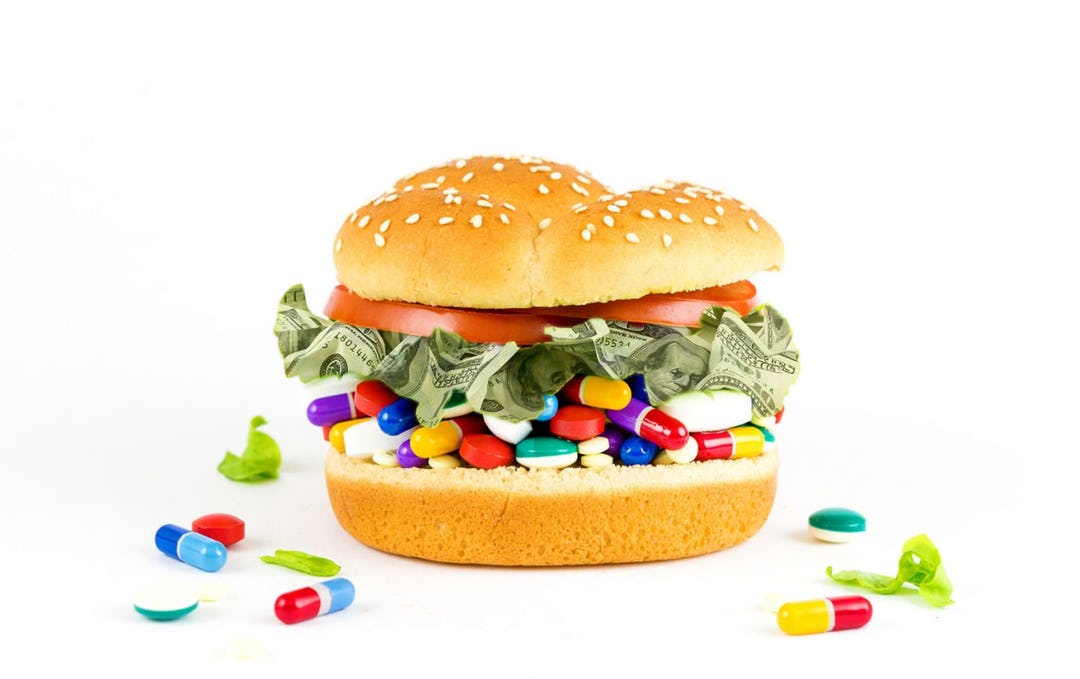



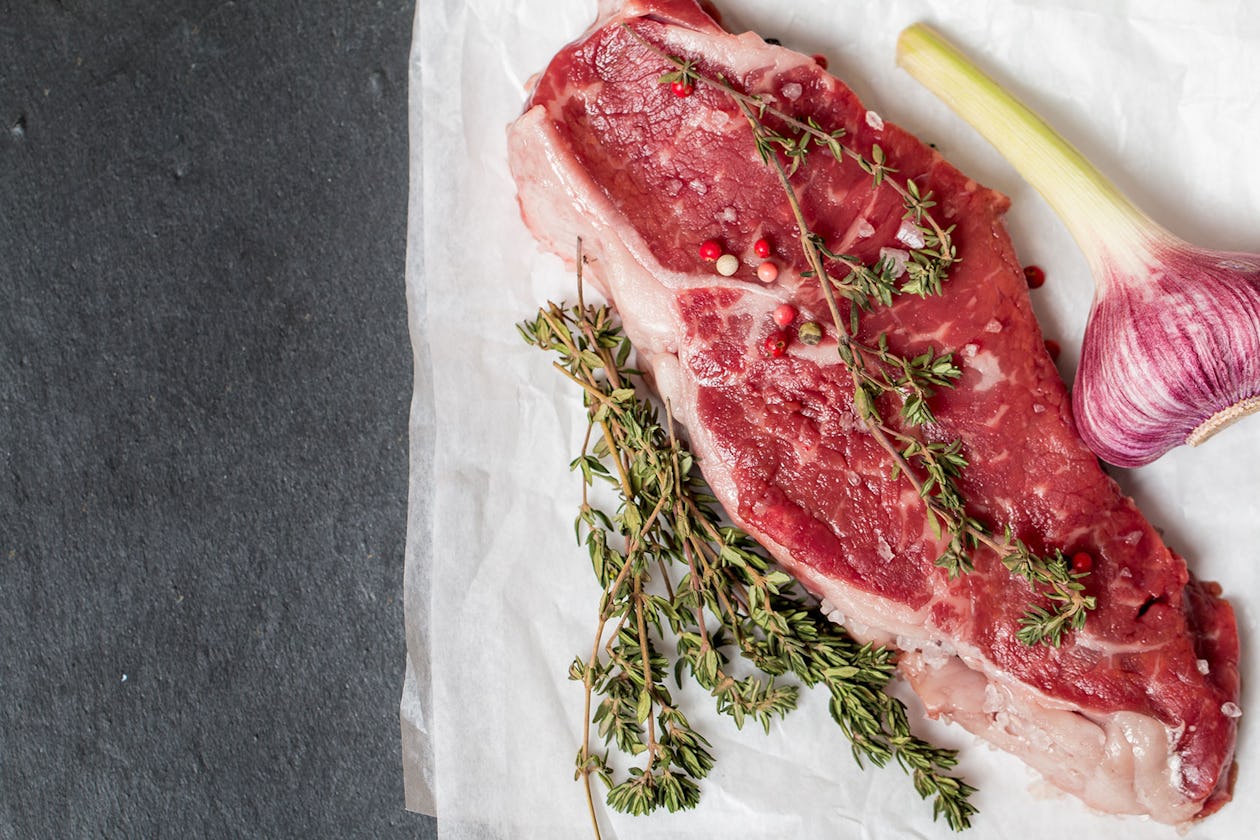
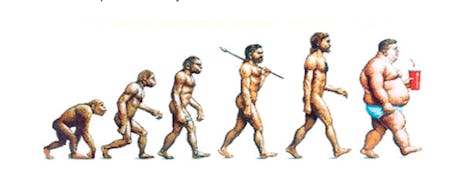
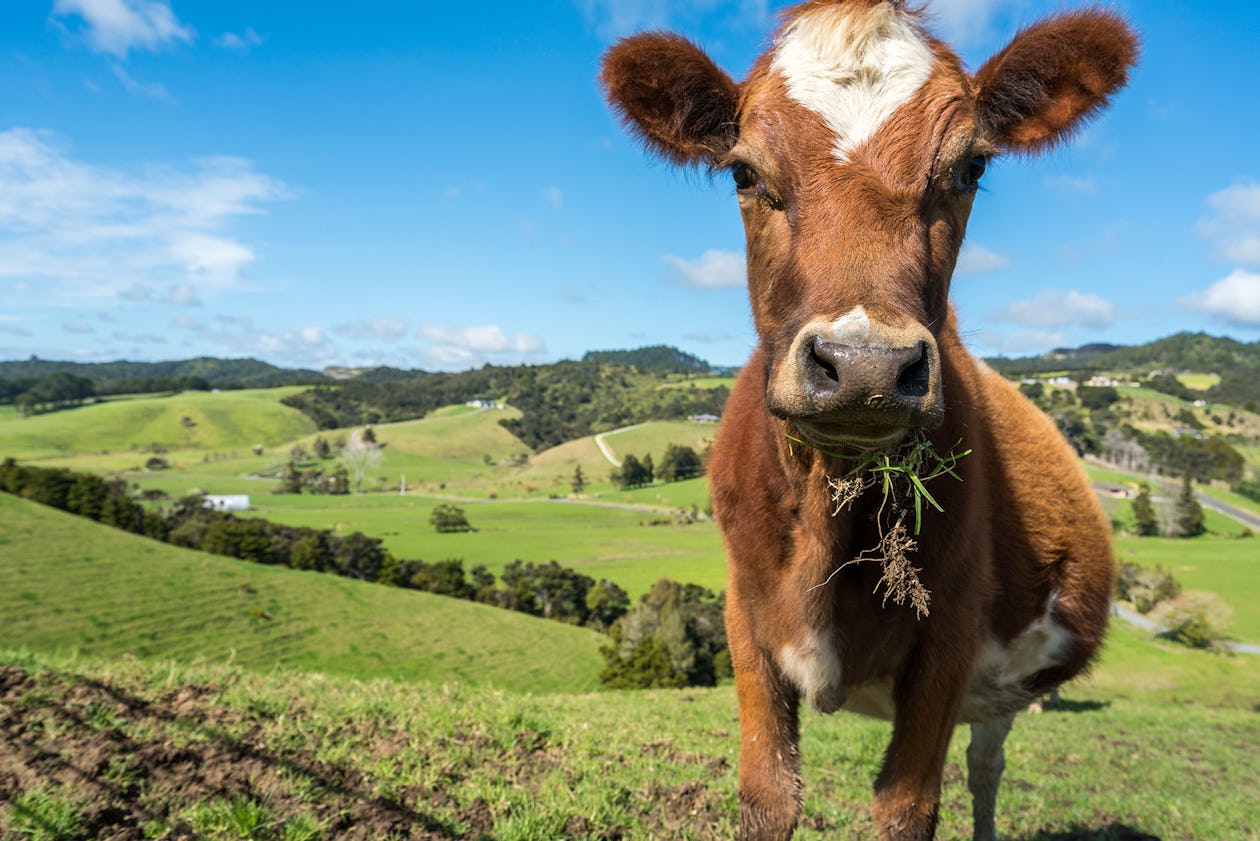

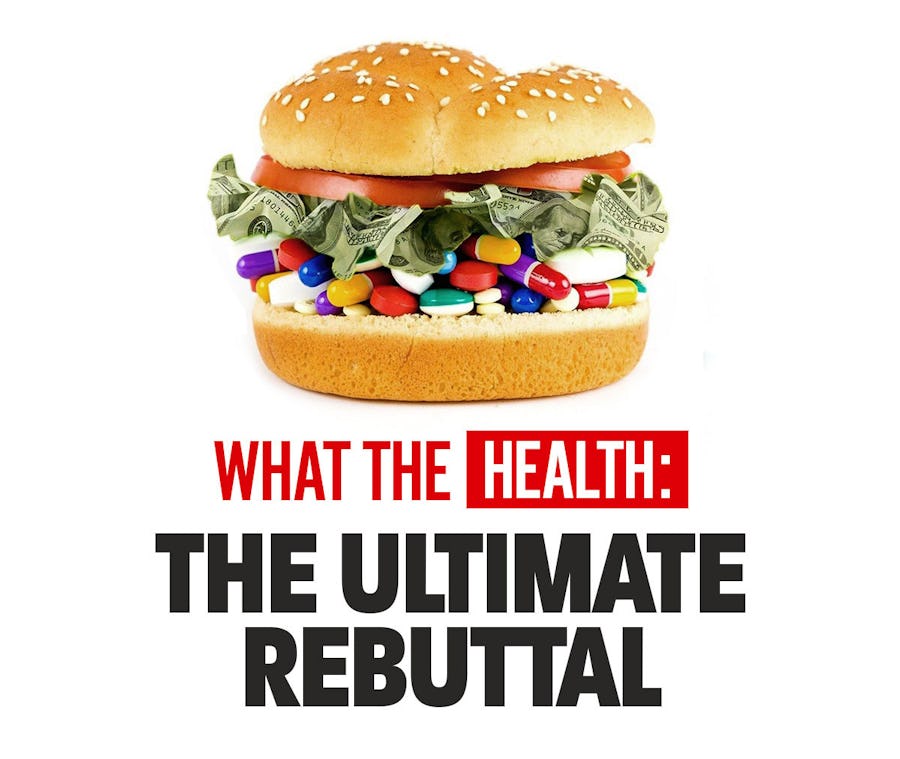
)






